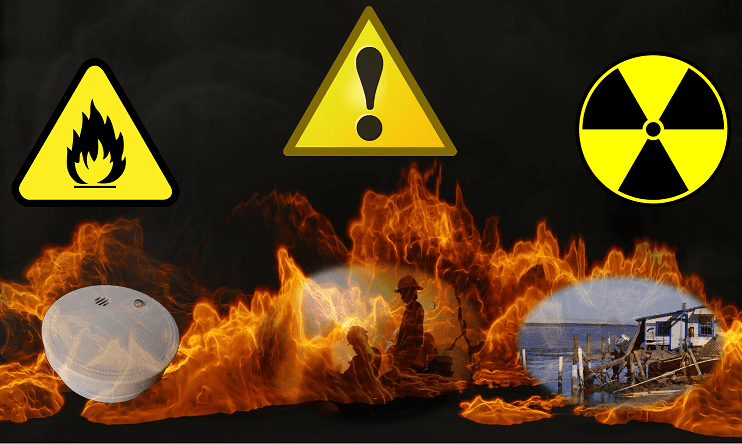
Disaster Preparedness: Safeguarding Your Future
Even though Disaster Preparedness Month is not until September, it is never too early to think about a plan in the event of a disaster. Whether it is natural calamities like hurricanes, earthquakes, or man-made incidents such as power outages and cyberattacks, being prepared can mean the difference between safety and quick recovery, and total chaos. As Southern California prepares for a rare tropical storm/hurricane watch – this is a reminder that we all need to take proactive steps to safeguard our lives, loved ones, and communities.
The Importance of Disaster Preparedness
Disasters can strike when least expected, leaving communities vulnerable and overwhelmed. Preparedness empowers individuals and communities to respond effectively, reducing the impact of disasters on lives and property. The goal is not just to survive, but also to thrive in the face of adversity. Disaster Preparedness Month serves as an annual opportunity to raise awareness and encourage action.
Key Steps for Effective Disaster Preparedness
1. Create a Family Emergency Plan:
Every family should have a well-thought-out emergency plan that includes contact information, meeting points, and evacuation routes. Practice emergency drills with your family members to ensure everyone knows what to do during a crisis.
2. Build an Emergency Kit:
An emergency kit should include essentials such as water, non-perishable food, medication, first aid supplies, flashlights, batteries, a multi-tool, and important documents. Keep it updated and easily accessible. To help you get started, the American Public Health Association put together a preparedness stockpile checklist that can be found here.
3. Stay Informed:
Monitor local news, weather updates, and emergency alerts to stay informed about potential threats. Sign up for alerts from local authorities and download relevant emergency apps.
4. Secure Your Home:
Depending on the region and potential risks, reinforce your home against disasters. This might involve fortifying against earthquakes, boarding up windows for hurricanes, or having fire extinguishers on hand.
5. Financial Preparedness:
Ensure you have access to emergency funds and important financial documents. This can help you recover faster after a disaster and provide a safety net during challenging times.
6. Community Engagement:
Disaster preparedness is not just an individual effort – strong communities are more resilient. Get involved in local preparedness initiatives, community drills, and support networks. Do not just rely on your local officials. Some communities develop their own disaster preparedness plan tailored to their needs. For example, some communities have horse ranches. In the event of a disaster, be mindful of possible supply and medical staging areas as well as dedicated locations for pets or large animals.


7. Technology Readiness:
Understand how technology can be both a help and a hindrance during disasters. Have backup power sources for communication devices and be cautious about relying solely on digital tools.
Promoting Awareness During Disaster Preparedness Month
1. Educational Workshops:
Organize workshops and webinars that cover disaster preparedness topics, encouraging participants to take practical steps in safeguarding their homes and families. Los Angeles County Office of Emergency Management frequently updates their Emergency Survival Guide that can provide additional information regarding how to plan and prepare for many types of disasters.
2. Social Media Campaigns:
Leverage the power of social media to share tips, infographics, and success stories of disaster preparedness. Use relevant hashtags to reach a broader audience. Social media provides real time information from neighbors, family, friends, and emergency responders.

3. Emergency Drills:
Collaborate with local authorities to conduct emergency drills in schools, workplaces, and neighborhoods. Real-life simulations can help people understand the importance of preparedness.
4. Collaboration with NGOs:
Partner with non-governmental organizations that specialize in disaster response and recovery. Their expertise can provide valuable insights and resources. In the event of a disaster, there are many NGO stakeholders such as insurance companies, utility companies, veterinarians, and consider places of worship to be a potential staging point or refuge area.


Conclusion
Although Disaster Preparedness Month serves as a reminder that safety is a shared responsibility, take advantage of the days you may change your clocks forward and backwards as another reminder to check your stocks. By taking proactive measures, staying informed, and fostering a sense of community, we can minimize the impact of disasters and ensure a brighter, more secure future for ourselves and those around us. Let this month be a catalyst for change, pushing us all to prioritize preparedness and contribute to building a resilient society.


